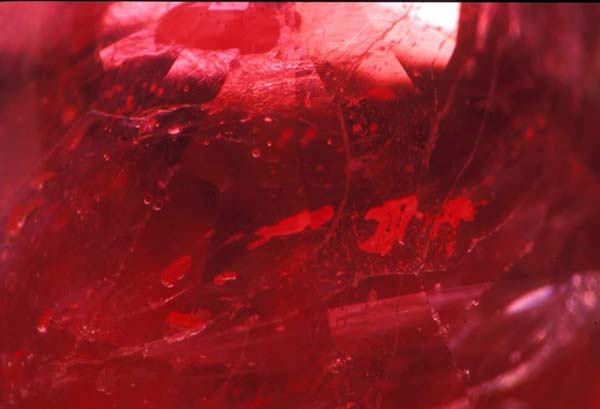|
RAPAPORT...
Gemological Institute of America: Myanmar (also known as Burma) is generally believed to produce most of the world’s gem rubies by value. Yet the Burmese government’s violent response to protesters this fall has resulted in calls for further government and industry sanctions against gems mined there. As a result, some jewelers and gem dealers are asking themselves what other countries to turn to for rubies. Fortunately, at least 90 ruby mines in 17 countries were producing in the 1990s (see the article on gem localities of the 1990s by James E. Shigley and colleagues in the Winter 2000 issue of Gems & Gemology,) with many more mines discovered since then.
One new source is in Madagascar, where gem hunters discovered large deposits of ruby early this decade. While some of the gem rough was very attractive, much of the material was so filled with cracks and fissures as to be suitable only for use as mineral specimens. Before long, however, dealers in gem-cutting centers devised a way to bring the poorer-quality rubies to the gem market—adapting a treatment from the emerald and diamond trades. By infusing high-lead-content glass into the fractures, they were able to give these goods an appearance suitable for jewelry products.
These so-called fracture-filled or lead glass–filled rubies have been on the market for at least three years, mostly as affordable versions of much higher-priced goods that have mild or no treatment, and they will likely remain on the market for years to come. The GIA Laboratory has seen filled rubies as large as 100ct., with many between 5ct. and 10 ct.

Flattened and rounded gas bubbles were visible in nearly all the lead glass–filled rubies (20×). Photomicrograph by Shane F. McClure; © GIA.
|
In 2006, GIA researchers Shane McClure, Christopher Smith (now with American Gemological Laboratories,) Wuyi Wang, and Matthew Hall conducted exhaustive tests on 50 polished lead glass–filled rubies to determine the durability of the filler and establish identification criteria. The goods were purchased at various locations, including New York, Bangkok, the JCK Show in Las Vegas, and the Tucson gem shows.
The researchers found that the filler was fairly resistant to heat, including a ring setting/retipping process. Temperatures up to 600 degrees Celsius had no effect on the filled rubies. Heating over 700 degrees Celsius, however, caused small amounts of the filler to begin “sweating” from the fissures and, after a few minutes, to flow onto the surface of the stone. In all cases, the fillers were damaged or partially removed when exposed to a pickling solution or other corrosive materials used for jewelry cleaning. Even common household products such as bleach, ammonia, and concentrated lemon juice left their mark on the filler.
Many of the samples purchased for the GIA study had a slightly brownish appearance, while some were light enough to be considered pink sapphire. However, two of the samples could have passed for medium-quality ruby had they been untreated or subjected only to heating. The stones showed the same gemological properties as unfilled corundum, with the exception of one sample that had a slightly elevated specific gravity, probably because the filling was quite extensive.
While the filler was very effective in masking the visibility of the fractures, the treatment was easily detected using a standard loupe or microscope. Blue or orange flashes appeared when the stones were rotated in the light, though the intensity of the flash varied with each stone. Within the filler itself, magnification revealed gas bubbles and, in some cases, a yellowish color.
Lead-glass filling has created commercial-quality rubies from highly fractured crystals. However, these tests show that full disclosure is needed not only from an ethical standpoint, but from a practical one as well. Buyers must know to keep such stones away from harmful substances and be sure to inform their jewelers about the nature of the treatment before they begin any repair work.
With the search for new sources invariably comes the discovery of new treatments. It is important to understand such treatments, how to identify them, and any durability concerns they may entail.
© Gemological Institute of America. All Rights Reserved
October 31, 2007
|